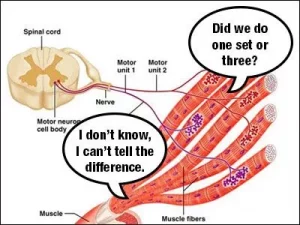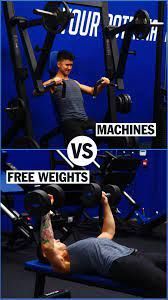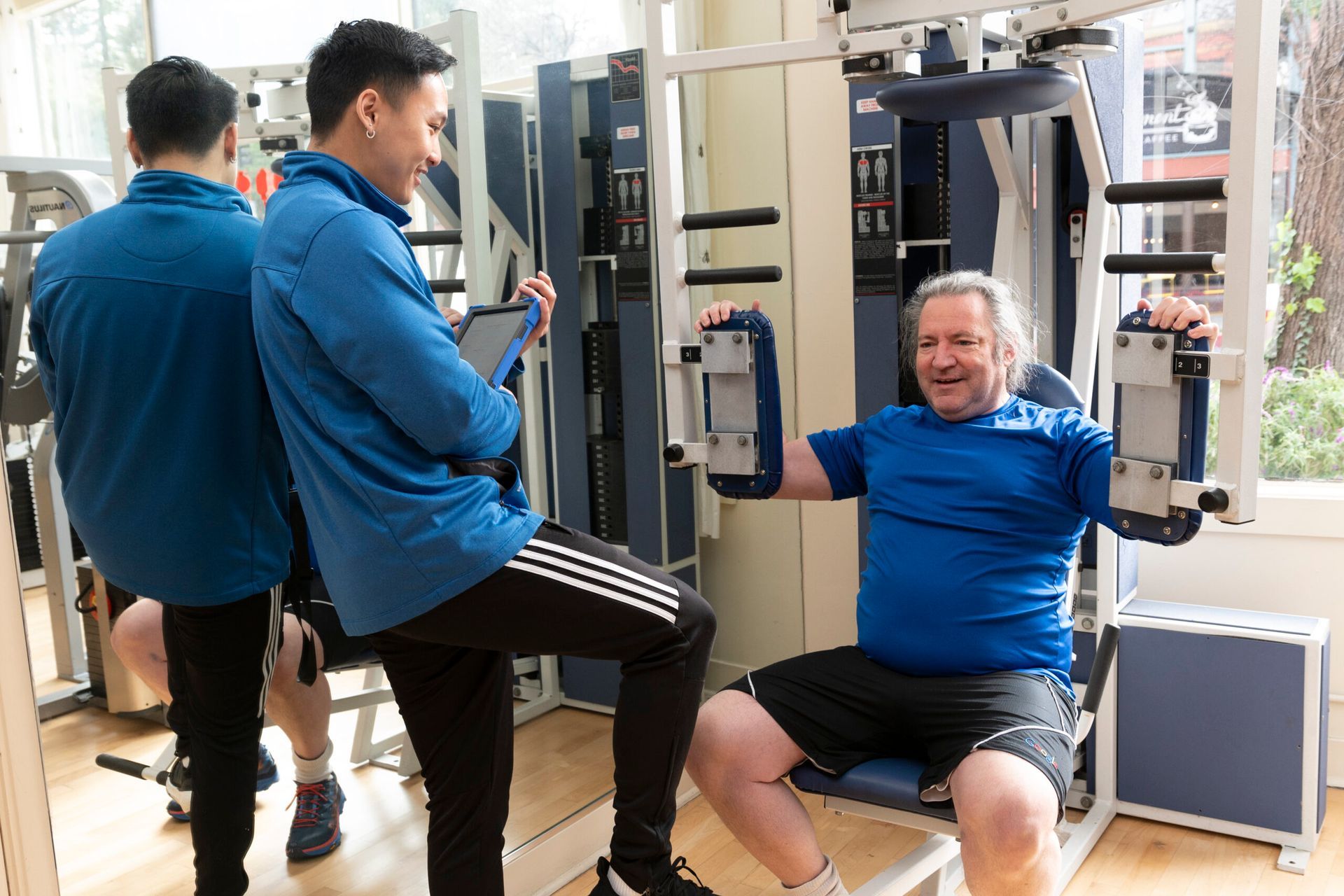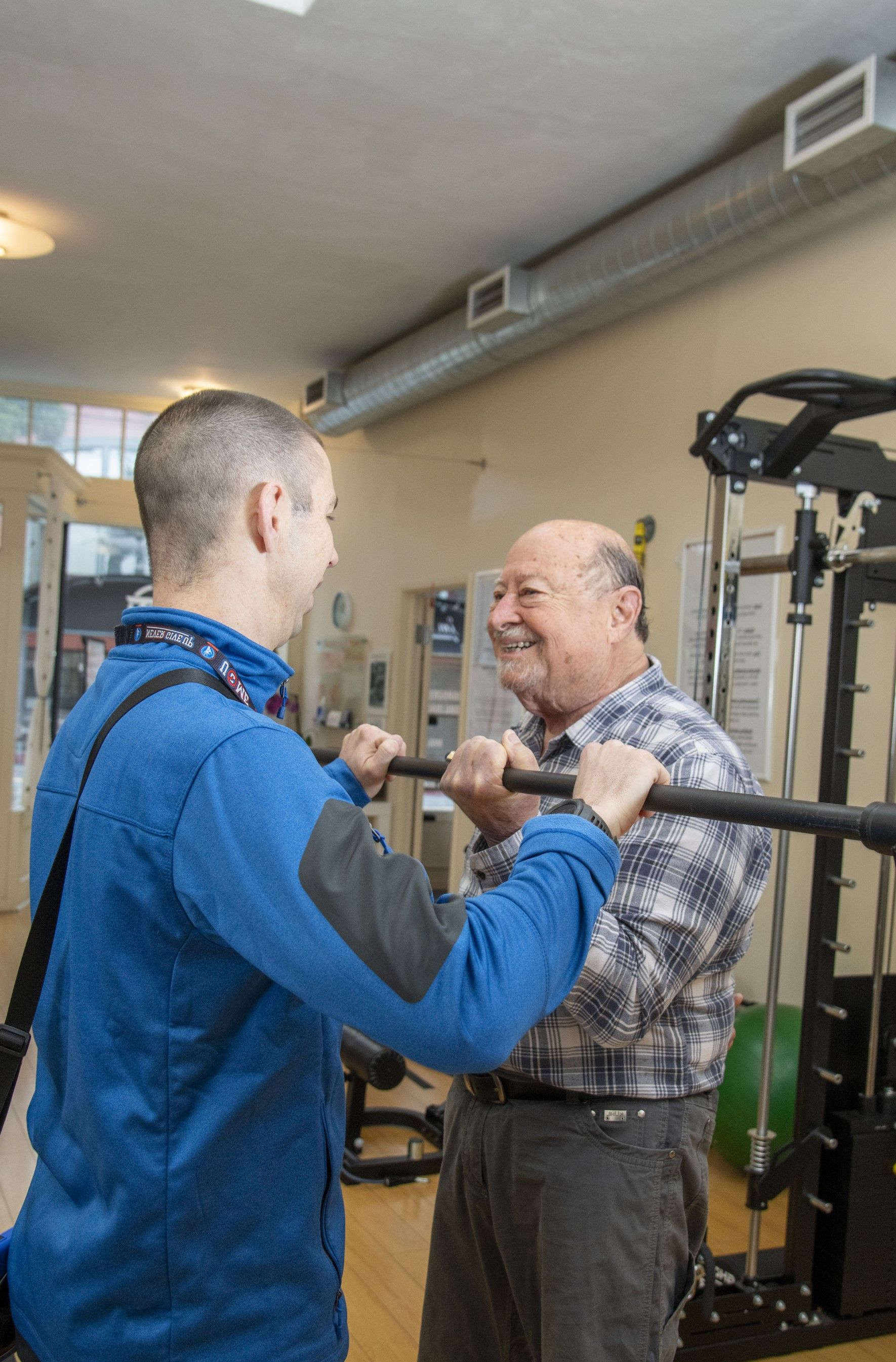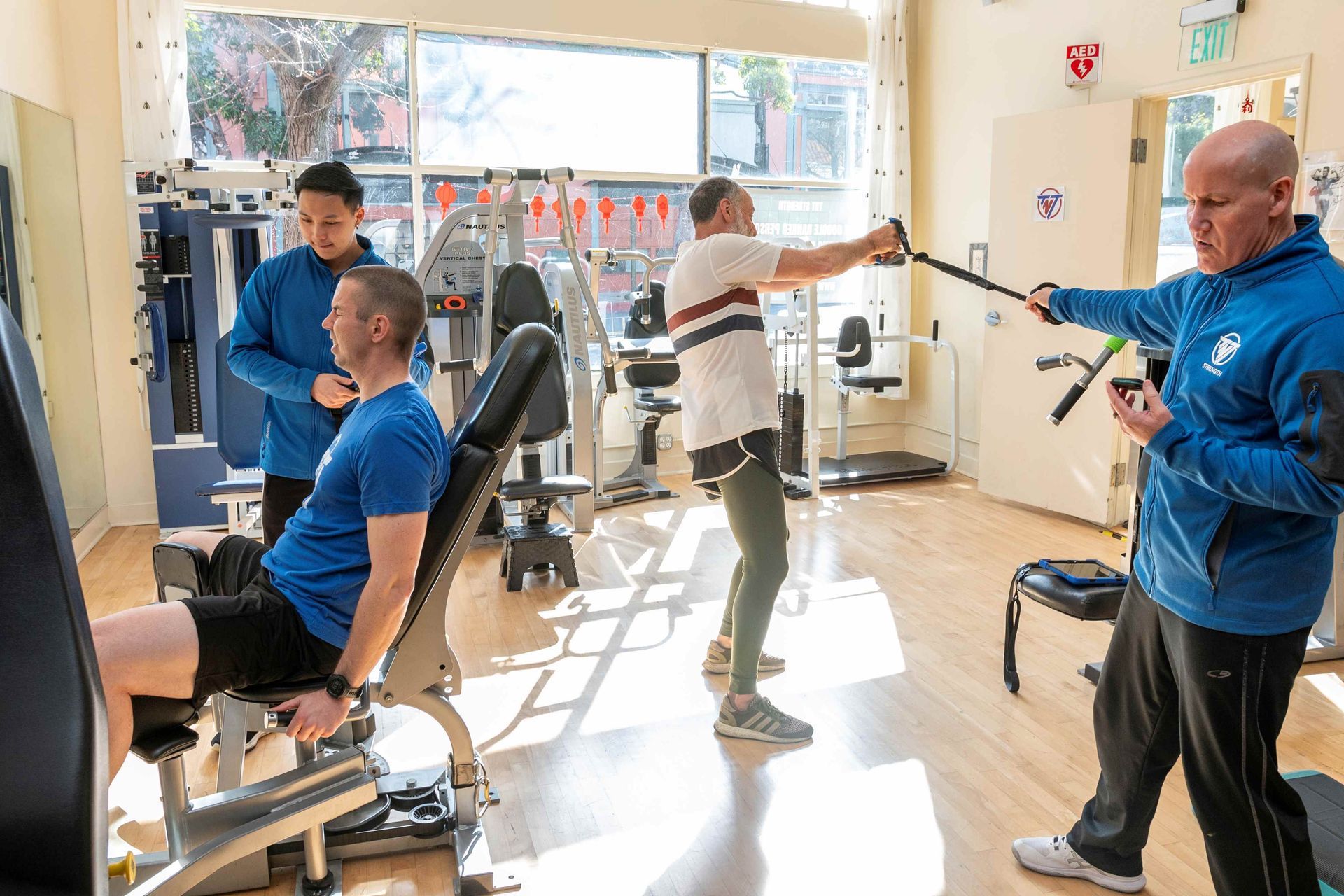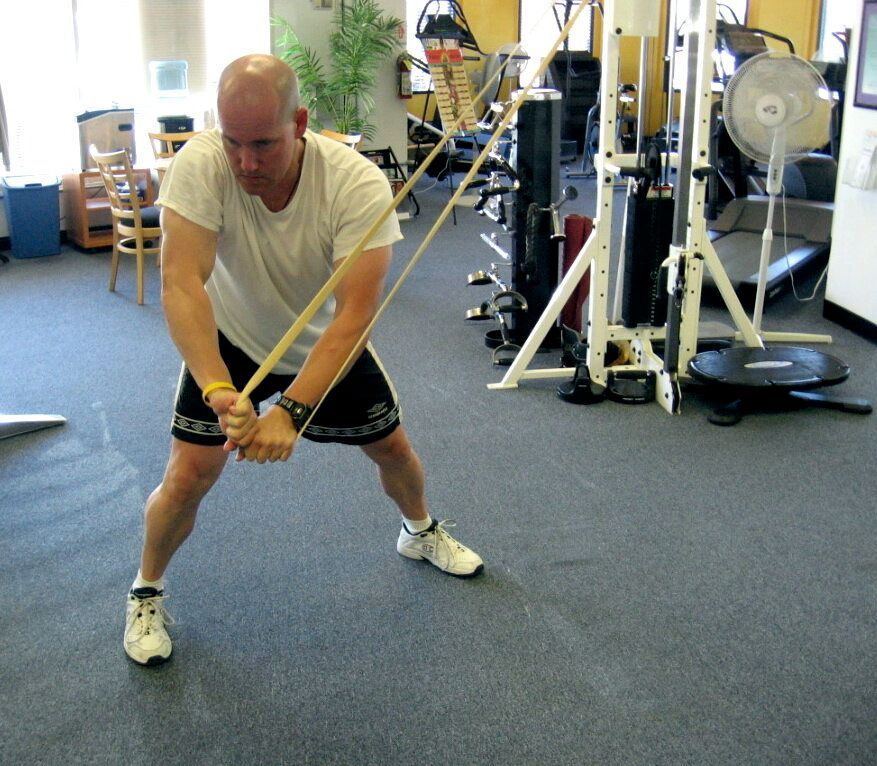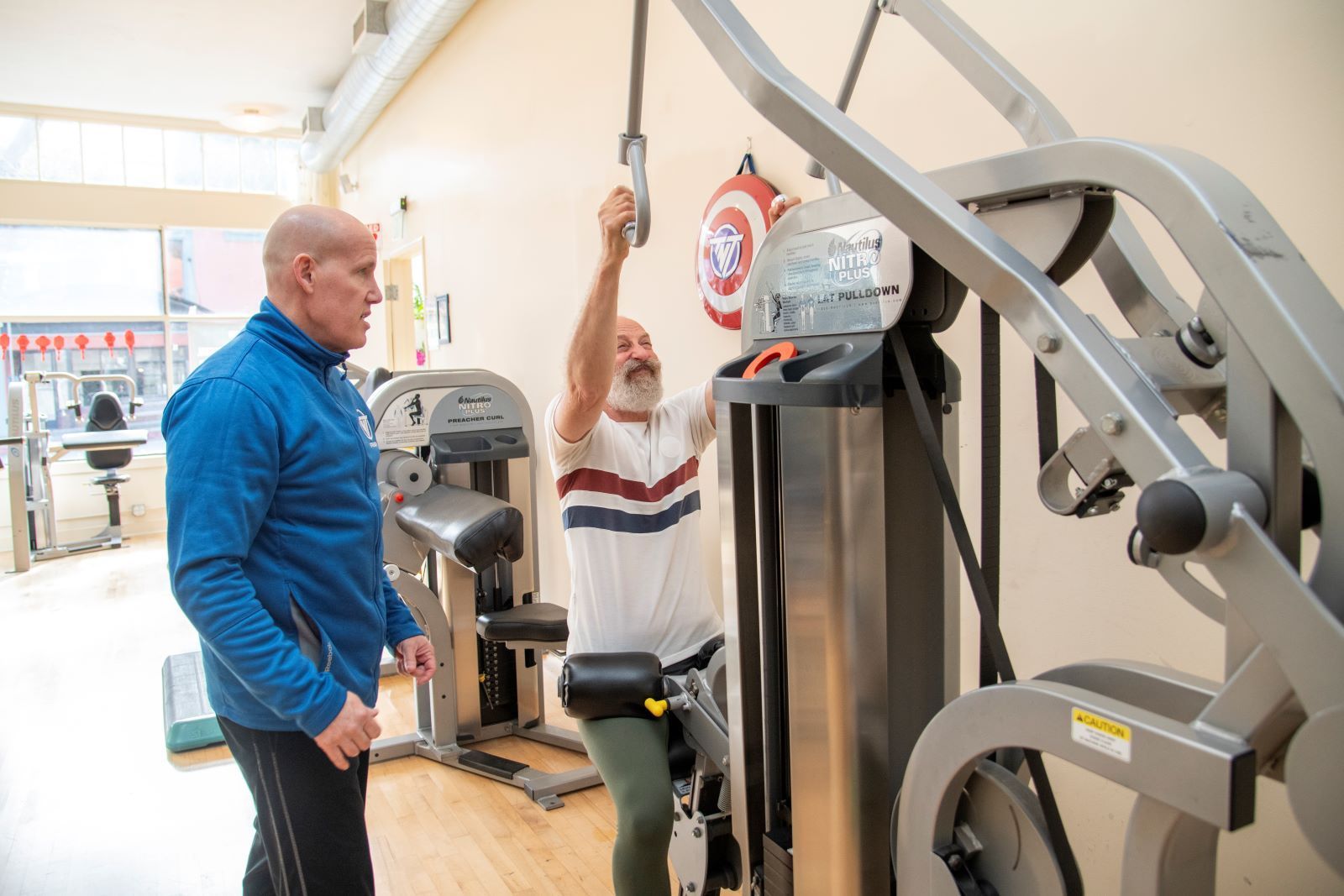I have read all the one-set vs. more-than-one-set approach to optimal strength training research and I have concluded this:
For the average trainee out there in 2024, doing
SOMETHING
(one set, all-out) is 100% better than doing nothing. Think about that.
Performing one set, all-out, followed by an additional set or another set (3 total) again going all out, will result in diminishing returns. That is, for each set performed to volitional muscular fatigue, it will be impossible to recruit the higher threshold type two fibers in forthcoming sets due to progressive fatigue. Any recruited and overloaded muscle fiber have then been "spent" thus the more-enduring intermediate and lower threshold fibers are still available, but with the inability to sustain the movement of a relatively heavy resistance for continued repetitions.
1)
It's not about the number of sets performed. It's the quality /
effort*
exuded. Go all-out (voluntary fiber fatigue) and the job is done.
*Creating high tension in the muscle fibers and working to momentary muscular failure involves the greatest amount of relative muscle tissue. Effort (working to fatigue) and using good form (controlled movement with no bouncing or jerking) are important here. If in doubt, slow it down and aim for maximum repetitions (safely).
2)
Recovery. If the above occurs, allow time for adaptation, both clock time and nutritional time (adequate protein and other micro-nutrients).
The question of the optimal number if sets will always be a topic of perpetual discussion. If you are truly willing to explore, than beginning with only one working set is the logical place to start.
Machines Vs Free Weights:
The majority of weight rooms today consist of mostly power racks and benches, with machines being considered inferior or less
*
Muscle overload can be applied with a variety of tools: barbells, dumbbells, machines, manually applied resistance, body weight, sand bags, etc. Anything that can create high tension in the muscles can be used.
What’s your training philosophy?”
It may sound a little silly, but I don’t have one. A philosophy is a system of beliefs, and I choose, instead, to take a science-based approach to resistance training using nothing but the most recent valid, reliable, research.
Frequency recommendations:
Generally, when working with young, fit, motivated athletes, we train the entire body twice a week, and our athletes can come in a third time if they choose. But if they’re busting it out twice a week, that’s usually all they need. In-season, we’ll cut that back to one total-body workout and one upper-body workout each week.
What is the most catastrophic injury an athlete can suffer in any sport? A cervical spine injury. Since we strength train mainly to help athletes avoid injury, my go-to exercises in the weight room are neck flexion and neck extension and shrugging movements. In addition to building muscle with these movements, athletes are strengthening their connective tissue and increasing bone mineral density in the cassettes of their cervical spine, which leads to a more structurally sound neck. I see building a stronger neck as a critical concussion prevention tool.
Nowadays, the stereotypical strength coach is someone who yells and screams all the time. It’s really sad, because when the rubber hits the road, you motivate people by forming sincere, unique relationships. You have to make a human connection and gain an athlete’s trust. Once you do that, they’ll do anything you ask.
High Tension Strength Training
No matter what your base approach to strength training involves, an indisputable tenet of hypertrophy (size increases) in muscle tissue indicates that tension must be created and maintained in the targeted area for the duration of the set. In other words, there comes a time when your athletes must engage in strength training techniques that require all out, or near all out efforts to complete the assigned rep range (e.g., 6-8 reps) or target number (e.g., 8 reps). This is a very metabolically demanding method of strength training that provides a high level of stimulation to muscle tissue.
When is an athlete ready for this type of training? From an age standpoint, an athlete in his freshmen year of high school should be physically ready to partake in this type of training, provided he has an adequate training background. We would wait until the athlete has been oriented in your current program and has been training with some degree of consistency and proficiency for several months.
Obviously, on certain movements, such as barbell squats, barbell / dumbbell bench press and incline press, and a short list of others, caution is the operative word when attempting those last few, most intense reps. Taking these particular exercises to the point of complete muscular fatigue is neither recommended or sensible. With practice, excellent coaching, precise documentation, and a generous allotment of common sense, a workable weight can be married to a rep assignment that elicits a great muscular effort within safe boundaries. Some free weight movements and most machine exercises can be performed in this manner. The beauty of the high tension approach is that it doesn’t need to be performed on every training day. Once a week, or even bi-weekly bouts will extract noticeable gains.
The coach’s base methods can be executed on the other weekly training days.
Here are some bullet points on implementing a high tension workout:
- Choose primarily multi-joint exercises – those that enable more than one joint and recruit the larger, more size receptive musculature (e.g., deadlift, leg press, Lat pulldown, DB rows, chin-ups, dips, various machine pressing and pulling movements, etc.).
- Through trial and error or a percentage of an estimated maximum (approximately 75-85%) choose a weight that allows for 6-10 reps.
- Perform the reps in a fashion where the positive (raising) phase is executed with enough force to generate steady movement, but not so rapidly as to lose control. Execute a more controlled negative (lowering) phase to heighten the intensity and prolong the tension within the targeted musculature.
- If the weight selection is correct, the last few reps should be very difficult to perform without deterioration in technique. Excellent exercise techniques are crucial, regardless of the movement being performed.
- Fifteen to twenty total sets can be performed, in any arrangement you prefer. Multiple sets of the chosen movements can be executed, or more exercises with reduced set schemes can be incorporated. Over time, a mixture of multiple set and limited set routines can be rotated for variety.
- Recovery periods between sets can range from 2-3 minutes in the initial stages, and be gradually reduced to 1 minute as the athletes adjust and adapt to the metabolic intensity of the workouts.
